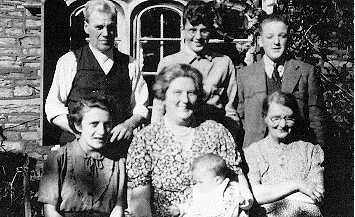INTRODUCTION
I came to the hospital as a Consultant Histopathologist at
the beginning of 1966. I soon learnt that there was a huge amount of
history associated not only with the buildings, but also with the land
on which it was built and the area in which it lay. In the late sixties
I started to take photographs of the changes on the estate; over the
next 25 years or so I took several hundred pictures. People became
aware of my interest and gave me the opportunity to copy photographs
that they had taken years earlier, long before I had arrived. I also
collected documents, often in the form of photocopies because the
originals were rare, or even unique. Over the years I came to learn
ever more about the background of the place.
Happy chance meant that two of the secretaries in the department of
Histopathology where I worked had personal or family connections that
went back many years. Gladys Caseley had been a nurse at the hospital
and married one of the sons of Sam Caseley, the hospital engineer;
Denyse Botteley was related to Violet Hallett, one of the Matron's
maids in the 1920s. Family photo albums produced little cameos of life
and work right back to the start of a hospital on the site.

Sam Caseley, Hospital engineer
(back left), Gladys Caseley (front left), other family members and a
friend, together with Miss Bowyer, Headmistress of the Sanatorium
School (front right). Around 1947
In 1981 we celebrated our fifty years
with a 'Golden Jubilee'. It was only some time later that I realised
that we were ten years too late! It was not in 1931 that the hospital
opened, but in 1921, when what had been an elegant Georgian family
house was purchased by the Corporation of Bristol in order to turn it
into a children's TB sanatorium.
However, 1981 spurred the then Matron, Vera Wilson, to publish
privately her booklet on the history of the hospital. This was on sale
at the time for the princely sum of £1.00. In it were wonderful details
of the evolution of the village, the estate and the buildings.
Especially intriguing to me were the details that she had culled from
the official reports that went back to the U.S.A. in World War II, when
most of the facilities had been used as a military hospital. The
American commanders were required to submit annual reports of the
activities during the preceding year. These documents were naturally
'top secret', but became declassified and available for study after the
War. Also available were half a dozen or so U.S. archive photographs,
some of which were panoramas of the hospital - delights indeed!
I slowly got to know more and more of the history and met more and more
people with unique memories, especially in 1992 when a group of us in
the hospital managed to arrange a reunion of U.S. veterans to celebrate
the fiftieth anniversary of their first arrival in 1942. More
photographs came out of the past accompanied by more memories.
This book is a compilation of what I have learnt and gleaned over the
years. Without the help of innumerable people, on both sides of the
Atlantic, it would be a very slim volume indeed. As it is, I hope that
it represents a reasonably comprehensive account of what I set out to
do - record the way things were and became.